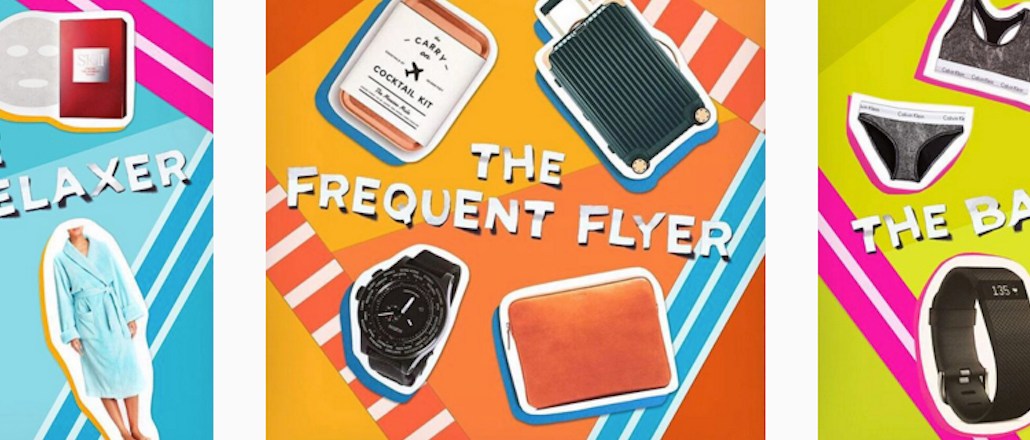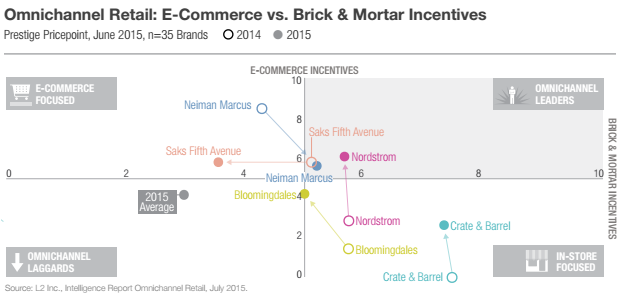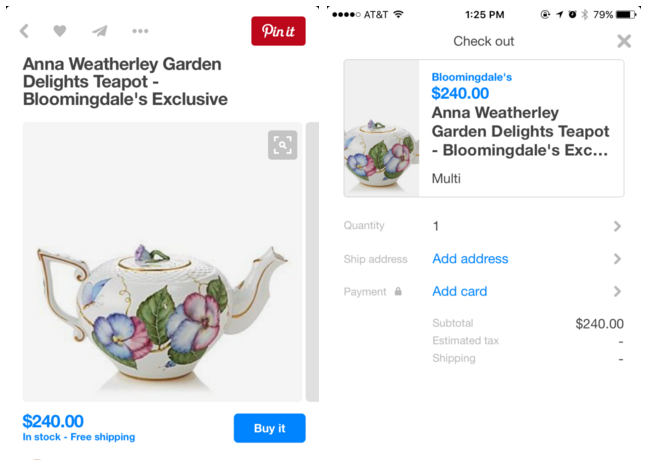Bloomingdale’s holiday social strategy uses Instagram to inspire, Pinterest to shop

Bloomingdale’s wants to bring its extensive collection of products to light for the holidays, and it’s using an Instagram- and Pinterest-geared social strategy to do so.
This year, Bloomingdale’s packaged its four gift guides — one for him, for her, for kids and for items under $100 — into Instagram videos and Pinterest boards that are equipped with the platform’s buyable pins. The idea behind the strategy is that Instagram will drive inspiration as followers watch a total of 400 products (100 items featured in each of the four videos) whiz by in a “GiftBot” video, similar to a casino slot machine. To shop the videos, customers are directed to Bloomingdale’s Pinterest account, where they can buy directly from the pins on mobile.
“Gift guides are only as good as the products they feature,” said Bloomingdale’s operating vice president of social and paid media Jonathan S. Paul. “We took it a step further by rethinking the experience and making it more interactive.” The gift guides are dotted with items one might not expect to find at their nearby Bloomingdale’s (a hot dog grill or an air hockey table, for instance).
For the 2014 holidays, Bloomingdale’s ran an Instagram gift guide based around the hashtag #Zoomingdales that asked high-profile Instagram users to show how they incorporate Bloomingdale’s gifts into their lives. This holiday campaign marks the first time the brand situated a campaign around buyable pins on Pinterest.
“The Instagram posts are a call to action for people to check out our gifting ideas on Pinterest — that’s where we’re driving people,” said Paul. “We saw the Pinterest’s buyable pins as a great fit for the gift guide.”
While the idea of anchoring the gift guide on Instagram and pushing people to buy on Pinterest results in a few clunky steps toward purchase, Paul said that Pinterest’s buyable pins will end up being the most frictionless way for consumers to shop on mobile, as they can do so with Apple Pay from Pinterest’s platform. While the Instagram videos are running as paid ads on Instagram, that call to action button takes consumers to Bloomingdale’s less seamless mobile site.
According to digital thinktank L2’s Omnichannel Retail study released with RichRelevance in September, Bloomingdale’s has improved its e-commerce and mobile offerings, but still falls behind competitors like Saks Fifth Avenue, Neiman Marcus and Nordstrom.

“The omnichannel shopper is way more valuable than a single channel shopper,” said Claire Capeci, global president of retail at J. Walter Thompson. “The reality is the inspiration the digital world gives is major — Instagram and Pinterest have such a visual pull, people are searching through hoping to be inspired.”
Bloomingdale’s joined Pinterest’s buyable pin platform in October (sister store Macy’s joined during June’s initial roll out), along with Wayfair, DVF and Steven Alan. Pinterest said during the announcement that Shopify merchants, which joined Pinterest’s buyable platform in June, showed two times the average conversion rate on mobile after running buyable pins. And, a Millward Brown study found that 87 percent of users have purchased something because of Pinterest. Bloomingdale’s gift guide will also run as promoted pins through Pinterest’s ad platform, which the company announced Monday would be shifting to focus more on retailers.

Pinterest also said that buyable pins put retailers in front of a new consumer pool, pointing to merchant Madesmith, which saw a 7 percent boost in sales from Pinterest, 100 percent of which were new customers. Bloomingdale’s, which declined to provide its average customer demographic, is looking to grab attention of the ever-coveted millennial consumer through social commerce.
“Pinterest is a great platform to make people rethink Bloomingdale’s selection,” said Paul.
The company is also testing activations on Snapchat, including a geofilter that shows up in users’ apps when they’re in or outside a Bloomingdale’s store.
“With Snapchat, we’re testing and learning and seeing what resonates,” said Paul. “Internally, part of it is trying to explain it to people. We want to target millennials and then it’s like, ‘what is this thing?'”
More in Marketing

Lowe’s wants to do more with AI shopping in 2026
Mylow, a shopping assistant powered by ChatGPT that launched in March, is already driving double the conversion rate for online shoppers.

‘This isn’t the old pre-roll world’: YouTube has been talking TV — now it’s selling that way
YouTube is ramping up efforts to get TV’s largest advertisers to move more of their budget into its platform.

As every screen becomes shoppable, attribution problems resurface
As more media environments become points of purchase, attribution and measurement remain the thorn in the side of commerce execs.





